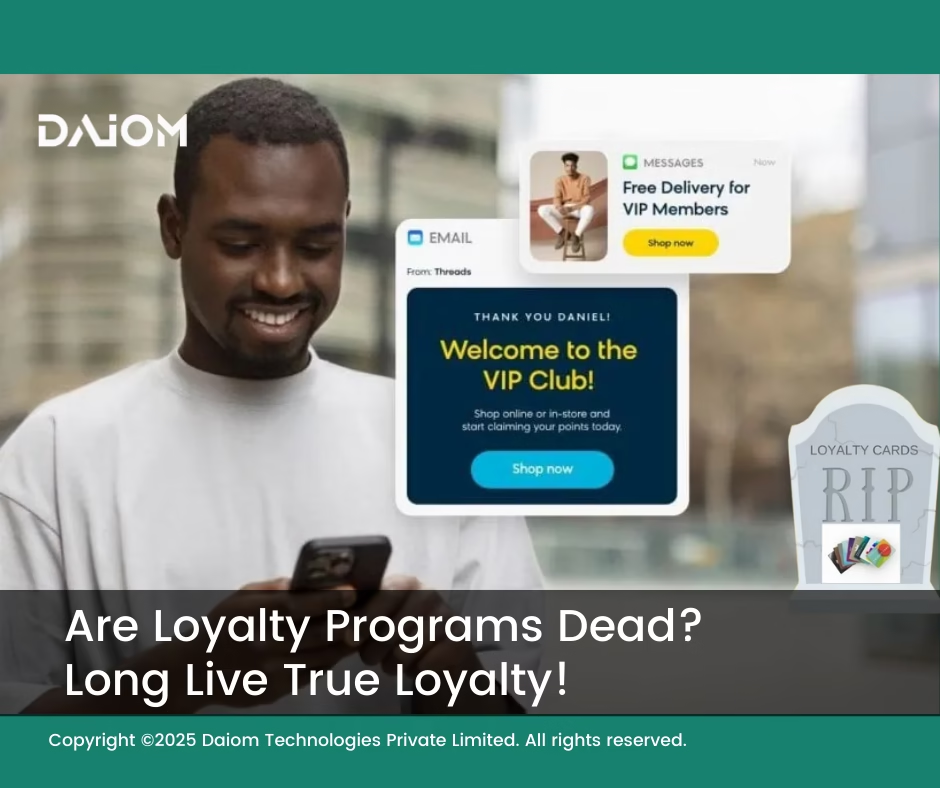I’ve seen how most traditional loyalty programs started. They mainly focused on transactions. You spend, and you get something back.
Usually, it’s about 0.5% to 2% in the form of cashback or points.
And I won’t lie, I’ve enjoyed those small cashbacks too earlier.
Getting ₹1 back on Paytm or ₹2 from Google Pay always brings a tiny moment of joy. But if I really think about it, those aren’t the moments that stayed with me.
The strongest recall I’ve had was when a brand helped me create a memory. Like the time I received a Taj stay voucher from American Express.
I used it to plan a 3-day vacation for my wife’s birthday.
That single experience left a much deeper impression on me than any number of cashback points ever could.
This blog explores how brands can go beyond points and cashback to create loyalty that lasts, by creating emotional and memorable experiences.
Loyalty is no longer just about the next purchase—it’s about the next interaction.
Phil Rubin, Loyalty Expert & Founder of Grey Space Matters
Table of Contents:
1. Why Rewarding Customers Matter?
Selling a great product isn’t enough anymore. If you want customers to stick around and love your brand, you need to show them they’re valued. That’s where loyalty rewards come in. Here’s why they’re important:
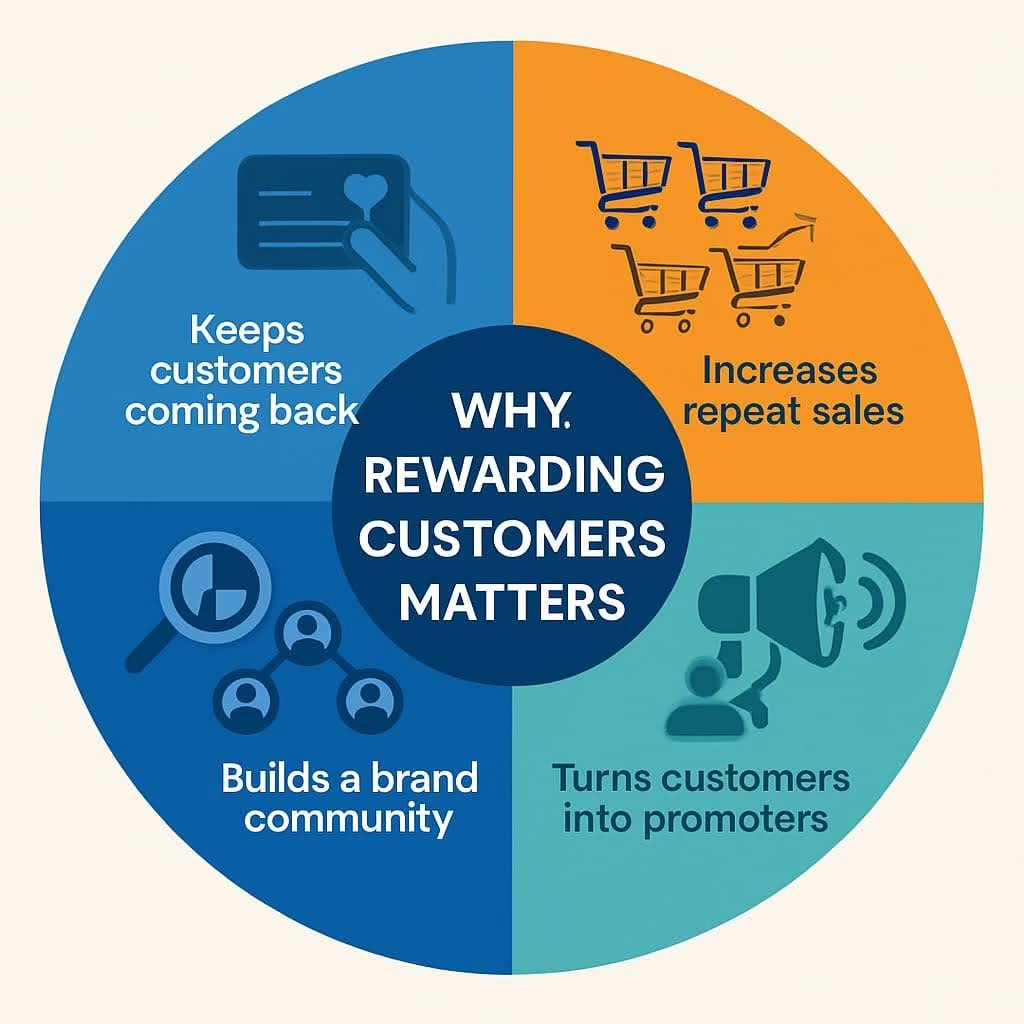
- Keeps Customers Coming Back: When customers feel appreciated, they’re more likely to return. Loyalty programs help reduce drop-offs and increase how long people stay with your brand.
- Increases Repeat Sales: Rewards encourage people to buy again—and even spend more. They choose your brand over others because they feel recognized.
- Turns Customers into Promoters: Happy customers talk. They tell friends and family about your brand, helping you get new buyers without spending much on ads.
- Builds a Brand Community: A good loyalty program makes customers feel special. With personal rewards and experiences, they feel like part of a club—and that builds loyalty.
- Gives You Useful Data: Loyalty programs show you what your best customers like, buy, and do. This helps you improve your products and target your marketing better.
2. Types of Rewards Brands Should Consider
Rewarding customers the right way can turn one-time buyers into lifelong loyalists.
In this section, we’ll explore the most effective reward strategies—and how they can help you boost retention, increase engagement, and build stronger customer relationships.
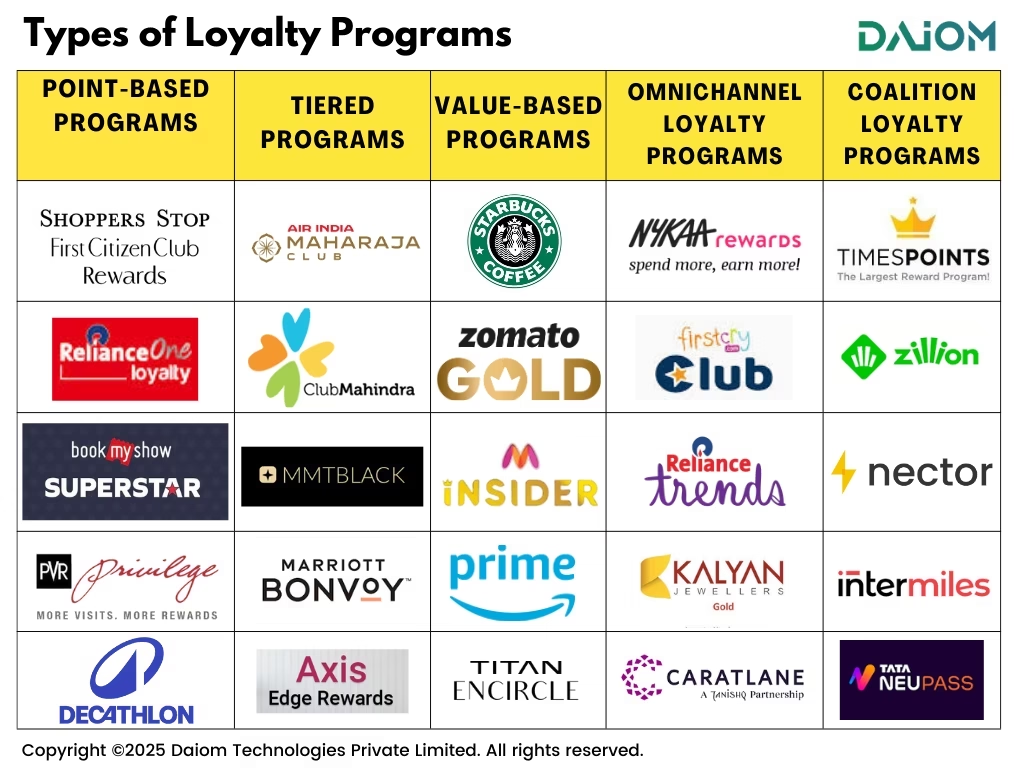
2.1. Transactional Rewards
These are the most common types of loyalty rewards — simple, straightforward, and based on spend. You buy something, and you get a small cashback or discount in return. I’ve often seen these used in wallets, food delivery apps, and e-commerce platforms.
While they feel nice at the moment (like getting ₹10 off your order), they don’t really build a long-term connection. It’s more like a short-term nudge to get the next purchase — not something that makes you stay loyal to the brand. It works best in high-frequency, low-involvement purchases.
2.2. Points Based Rewards
Point-based programs are the most widely used loyalty format. Customers earn points for every purchase and can redeem them later for discounts, freebies, or other perks. It’s a simple and scalable system that works well across different industries.
For example,
- Zomato used to offer Zomato Gold, where frequent diners got 1+1 on food or drinks — turning loyalty into real, tangible perks.
- Amazon Pay, on the other hand, gives cashback and vouchers for every UPI or bill payment. But again, the key is ease — the moment redemptions get tricky, interest drops.
- Nykaa’s reward program gives you points for every purchase, and even more during sales or special campaigns.
- Similarly, MakeMyTrip lets you collect “Trip Coins” that can be used for flight and hotel bookings. These make users feel like every transaction is building toward something bigger — but only if the reward feels worth it.
Read more – Points Vs. Cashback: What Drives Customer Loyalty?
2.3. Experiential Rewards
Experiential rewards are often the most expensive for brands to offer, but they also deliver the highest emotional impact.
Unlike cashback or discounts, these rewards turn into lasting memories — and that’s where real loyalty begins.
I’ve generally seen this work best in high-ticket categories like credit cards, luxury travel, hotels or premium services.
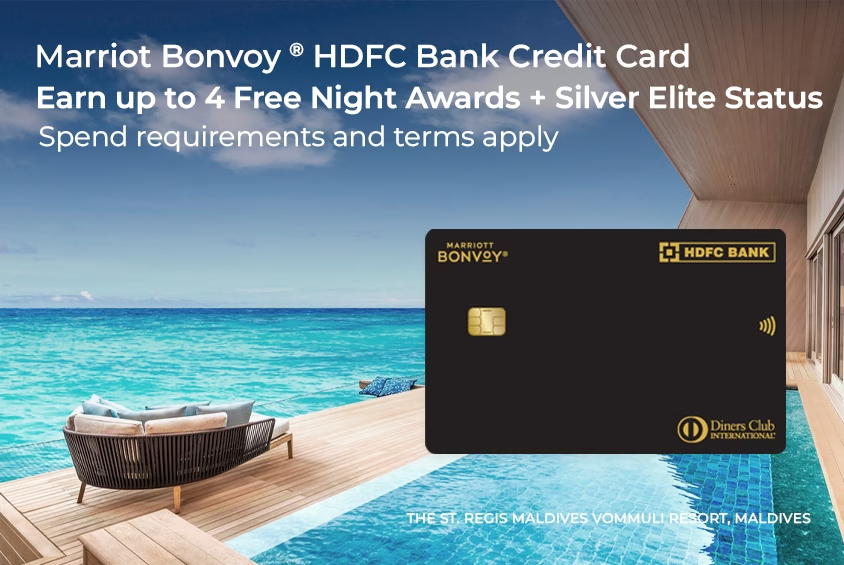
For example, getting access to an exclusive event, a free stay at a luxury hotel, or even a fine dining experience create moments people remember and associate with the brand. It’s not just a transaction anymore; it becomes a story they tell. And that emotional connection drives much stronger and longer-lasting loyalty.
My best memories are from a free stay at the Marriot or a business class ticket voucher. What I don’t remember are small cashback amounts like ₹3 or ₹5. Instant rewards may feel nice briefly, but they don’t build lasting memories or true loyalty.
3. How to Earn Rewards?
Loyalty isn’t always built through purchases. It also comes from actions that show engagement. Many programs now reward users for things like completing their profile, writing a review, taking surveys, or referring others. These non-transactional actions help brands build better data and trust, while also giving customers value in return.
One interesting example I’ve seen is in the Manus AI tool. They offer credits when you refer others.
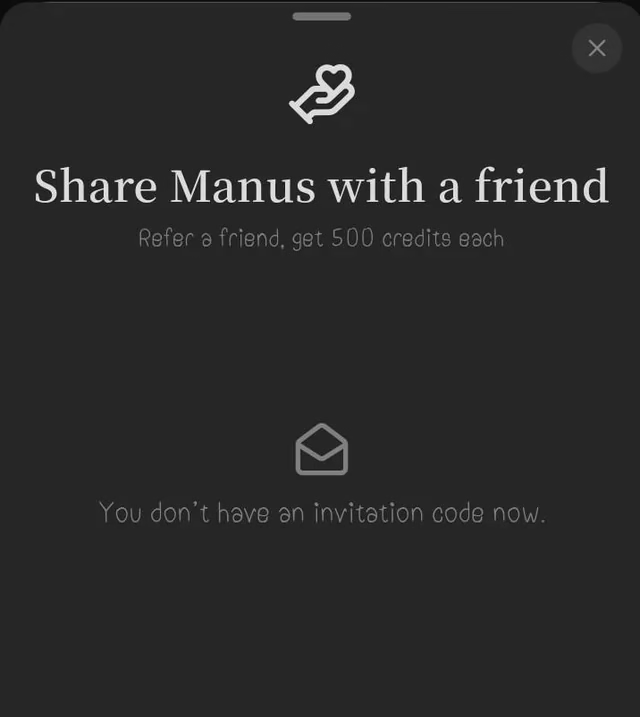
I personally found it so useful that I ended up recommending it to around 25 people. It felt great to earn rewards for simply sharing something I genuinely liked. When done well, these action-based rewards create both value and advocacy.
4. Real-Life Case Studies of Brands That Keep Their Customers Coming Back!
Let’s take a look at how leading brands like Starbucks have built loyalty programs that not only reward but also deeply engage their customers.
4.1 Starbucks
Starbucks has one of the most successful customer loyalty programs in the world—and it’s a great example of how smart rewards can drive real results.
Their Starbucks Rewards program uses a simple points-based system with two levels: Green and Gold. Everyone starts at the Green level when they sign up. As customers earn stars by making purchases, they can unlock rewards and move up to the Gold level.

Here’s how it works:
- Green members get early access to new menu items, special discounts, and bonus star promotions.
- Gold members—who earn 450 stars in a year—get extra perks like free syrups, extra espresso shots, free whipped cream, and a free birthday drink.
- For every 150 stars, members get a free drink reward.
What makes this program so effective is how it adds value to things customers already enjoy. Little extras like free syrups or customisations make people feel special—and motivate them to keep coming back.
Another key success factor is Starbucks made it easy and fun to track rewards through their mobile app. Customers can check how many stars they have, how close they are to their next reward, and what benefits they can unlock. This app alone drives nearly 6 million sales per month, accounting for about 22% of all U.S. sales.
4.2 Amazon Prime
Amazon Prime is a standout example of a paid loyalty program that delivers serious value. Instead of using a points system, customers pay a monthly or yearly fee to unlock a wide range of premium benefits.

Here’s what members get:
- Free two-day shipping on millions of products
- Access to Prime Video for movies and TV shows
- Ad-free music streaming and curated playlists
- Early access to Lightning Deals and exclusive discounts
- Unlimited photo storage and the ability to share benefits with family
Even though customers pay to join, Amazon Prime offers so much value that members feel it’s worth every rupee. The program goes beyond just rewards—it offers convenience, entertainment, and savings all in one place. That’s why it sees high retention and frequent usage.
59% of consumers are more likely to choose brands with paid loyalty programs, and 43% of them make purchases weekly.
- Mckinsey
4.3 American Express
American Express has built a powerful loyalty program by teaming up with a wide range of partners—from hotels and airlines to online retailers and sports brands. These partnerships allow Amex to offer rewards that go beyond just their own services, giving customers more options and value.

Here’s how it works:
- Cardholders earn points on every purchase, which can be redeemed for travel, merchandise, gift cards, and more.
- Premium cards like the Gold and Platinum offer extra benefits, such as faster points earning, luxury travel perks, and access to airport lounges around the world.
- Customers can also transfer their Amex points to other loyalty programs, like Delta SkyMiles or Marriott Bonvoy, often with great exchange rates.
American Express creates value by offering a wide variety of meaningful rewards through strong partnerships. This gives customers flexibility and more reasons to stay loyal. The ability to redeem points across different programs adds convenience, while the premium card benefits appeal to frequent travellers.
For any brand, the lesson is clear—partnering with the right companies can take your loyalty program to the next level, especially if those offers truly add to your customer’s lifestyle.
5. Challenges and Considerations in Rewarding Customers
Giving rewards to customers sounds easy—but it’s not always simple. You want them to feel valued, but you also need to be smart about how and when you reward them.
Let’s look at the common problems brands face with rewards—and how to solve them.
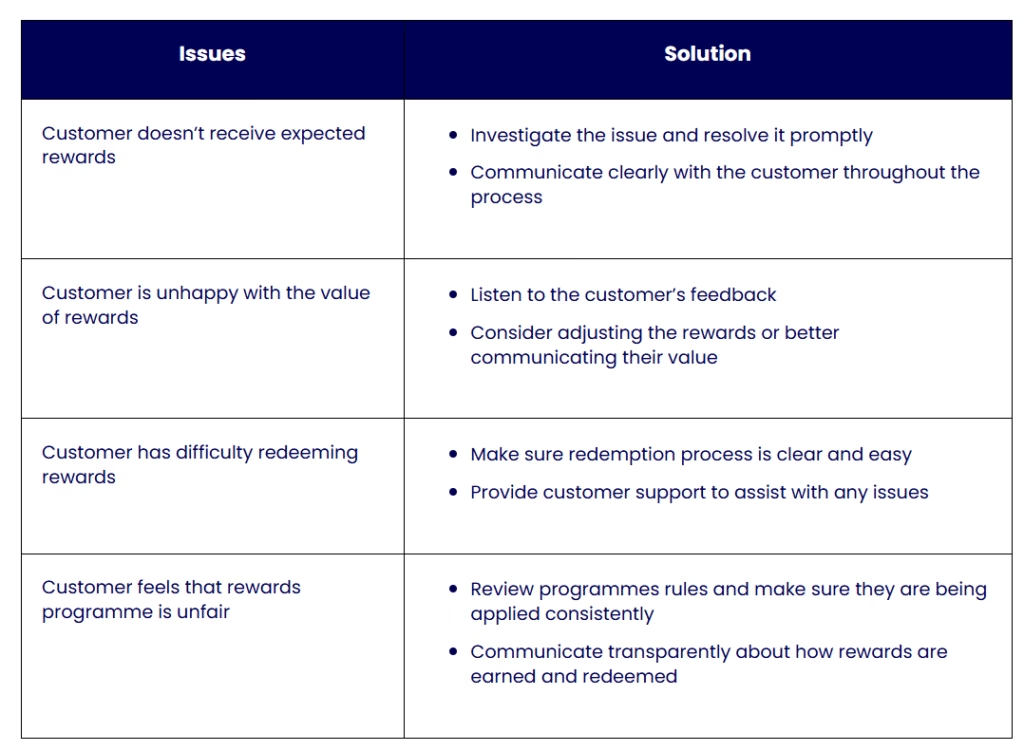
6. Conclusion
The best loyalty programmes are the ones that truly make customers feel special. When rewards are thoughtful and personal, customers stick around longer, spend more, and happily spread the word.
Whether you’re a big brand or just starting out, the key is to know your audience and reward them in a way that matters to them. The case studies in this blog here prove it—when done right, loyalty rewards create happy customers and long-term growth.
Want help setting a loyalty program? Feel free to reach out to us at saurabh@daiom.in. We’d be happy to set up a consultation call.
For more informative content and blog, follow and stay tuned to DAiOM.
Subscribe to our NEWSLETTER!


